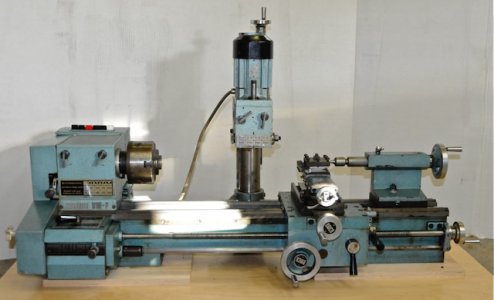I wanted to say thank you to all of you who give so much time and effort to help out those of is with questions. There is just so much to absorb here, and it is in depth and overwhelming.
I am eager to dip my toe into machining, having been an avid hobbyist woodworker on and off for about a few decades. I have been scouring the usual sites looking for some used machines, and even looked at a few used machines in person and realized that I would very likely want to go with something newer with parts support and an active community. Which brings me to very likely going with a Precision Matthews mill and lathe.
I am still trying to narrow down the specific machines
Mill 833TV vs 935TV
Lathe 1130V vs 1236T vs 1340GT
Having known myself all of my life, I tend to outgrow my tools pretty quickly, as I get more ambitious, enthusiastic, grow my skills, and tackle bigger things. So I either get the upper middle entry level version and wish I had the more capable version, up until I sell the first one and finally go with the second choice, or I just buy the big one first. (I don't know if I have ever actually bought the big one first)
I only have a single 20 amp 220v outlet in my shop (which is technically our master bedroom in our garden level condo (yeah, my wife is pretty cool)
I have maybe gotten a little paranoid reading the issues with single phase motors leaving a sketchy surface finish that i have been diving head first into the VFD/RPC/DPC discussions throughout this forum.
It seems like the easiest solution was to go with a Phase Perfect, but I wasn't sure how you wire two machines into a single DPC. It also looks like the Phase Perfect recommendation is a 30 amp breaker. As well as their comparison sheet stating that the Simple version doesn't support 'Regenerative loads, such as motors with electronic brakes like lathes'
I think from everything I have found so far, Mark Jacobs has published some schematics for the vfd solutions, but it still is a diy solution where you source everything yourself and there are no 'starter kits' available for purchase.
Whew, I am one confused puppy here.
The projects I have in mind to start are as basic as lightsaber hilts for my Star Wars obsessed horde of nieces and nephews, and some non-functional art pieces resembling small robots.
In closing, you are all pretty incredible. May you all be well.
-Mark W
I am eager to dip my toe into machining, having been an avid hobbyist woodworker on and off for about a few decades. I have been scouring the usual sites looking for some used machines, and even looked at a few used machines in person and realized that I would very likely want to go with something newer with parts support and an active community. Which brings me to very likely going with a Precision Matthews mill and lathe.
I am still trying to narrow down the specific machines
Mill 833TV vs 935TV
Lathe 1130V vs 1236T vs 1340GT
Having known myself all of my life, I tend to outgrow my tools pretty quickly, as I get more ambitious, enthusiastic, grow my skills, and tackle bigger things. So I either get the upper middle entry level version and wish I had the more capable version, up until I sell the first one and finally go with the second choice, or I just buy the big one first. (I don't know if I have ever actually bought the big one first)
I only have a single 20 amp 220v outlet in my shop (which is technically our master bedroom in our garden level condo (yeah, my wife is pretty cool)
I have maybe gotten a little paranoid reading the issues with single phase motors leaving a sketchy surface finish that i have been diving head first into the VFD/RPC/DPC discussions throughout this forum.
It seems like the easiest solution was to go with a Phase Perfect, but I wasn't sure how you wire two machines into a single DPC. It also looks like the Phase Perfect recommendation is a 30 amp breaker. As well as their comparison sheet stating that the Simple version doesn't support 'Regenerative loads, such as motors with electronic brakes like lathes'
I think from everything I have found so far, Mark Jacobs has published some schematics for the vfd solutions, but it still is a diy solution where you source everything yourself and there are no 'starter kits' available for purchase.
Whew, I am one confused puppy here.
The projects I have in mind to start are as basic as lightsaber hilts for my Star Wars obsessed horde of nieces and nephews, and some non-functional art pieces resembling small robots.
In closing, you are all pretty incredible. May you all be well.
-Mark W




